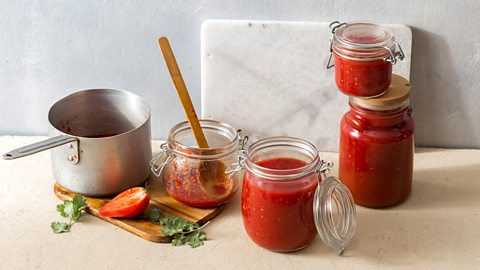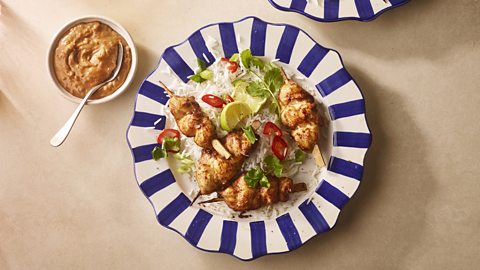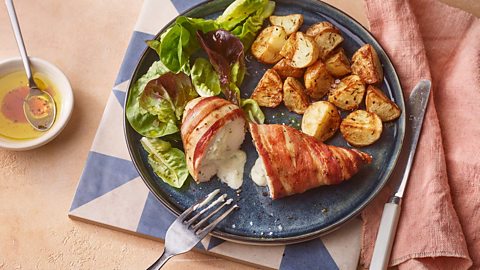How to recreate dishes from your travels at home
From Greek salad to tiramisu, here’s how you can make authentic European favourites in your own kitchen.
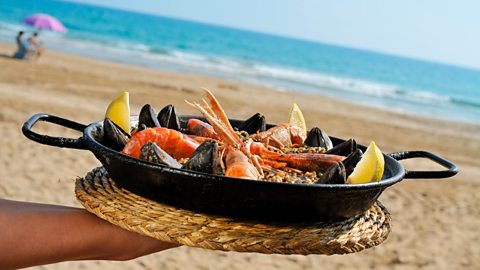
The summer months often have us daydreaming of balmy al fresco evenings abroad, sipping sangria on the beach or tucking into fresh, handmade pasta on a restaurant terrace.
Whether you've already jetted off this season or have only dreamt of escaping to sunnier climes, getting that holiday fix might be easier than you think. These recipes from four of the most popular holiday hotspots will help you cook up the flavours of your travels at home. Follow the tips we've collected from professional chefs to make them as authentic and sunshine-filled as possible.
Greece
Greek dolmades
Soft and tangy, stuffed vine leaves are popular across a few European and Middle Eastern countries. When making them at home, Vaios Salagiannis, head chef at Ampéli suggests some tweaks to the traditional recipe.
“Try replacing a third of the rice with couscous, and use a mix of minced meat: 70% beef and 30% lamb.”
Remember that fresh herbs help make all of the other ingredients sing, too: “You need a good handful of mint, parsley and dill.”
Want the perfect accompaniment to dolmades? Try Rick Stein's gigantes with tomatoes and greens, a recipe which comes from Epirus in northern Greece.
Greek salad
Made with vegetables, feta and olive oil, this simple dish can sometimes feel lacklustre when we're eating it without the warmth of the Greek sun on us. There are some simple ways to ramp up the flavour, though.
Vaios Salagiannis, head chef at Ampéli, says, “Squeeze all the vegetables together and make the feta crumble, so it combines better. Also, prep the salad two hours before and keep it in the fridge.”
Now make
Greek-style chopped salad
This chopped salad is full of the flavours of Greece including feta, olives and tomatoes
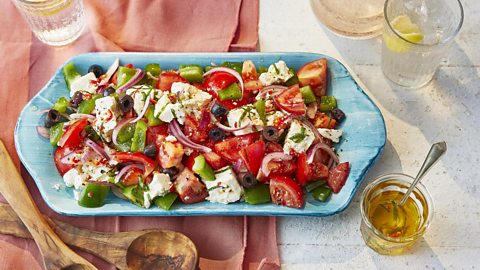
Baklava
Crisp, crunchy layers of filo pastry drenched in sweet syrup makes baklava a go-to dessert on holiday. To add flavour and rein in the sweetness slightly, MasterChef 2019 champion Irini Tzortzoglou suggests ditching the sugar syrup in favour of honey.
Now make
Walnut and honey baklava
This baklava offers up a taste of the Med
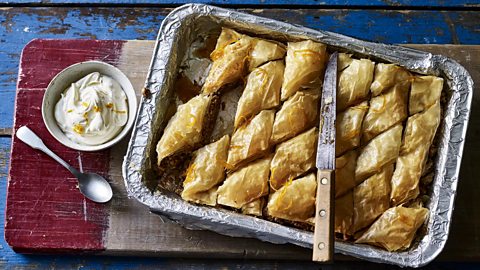
Italy
Tiramisu
Just a small number of ingredients make up this indulgent dessert, so they need to be given the right treatment if you want the best results.
Roberta D'Elia, head chef for Pasta Evangelists, says that to make a great tiramisu, you need to get to work two days in advance. “Start by preparing the coffee, preferably with a stove-top coffee maker, and leave it to rest overnight at room temperature in a closed bottle. Don't add any sugar to it, since the savoiardi biscuits are already sweet.
“The next day, assemble your tiramisu and leave it in the fridge overnight to allow the biscuits to reach the perfect consistency.”
Giovann Attard, chef at Norma adds, “It’s very important to dip your savoiardi [in espresso], not soak, otherwise the tiramisu will be too runny."
Now make
Tiramisu
This authentic tiramisu recipe will impress everyone and can be made-ahead
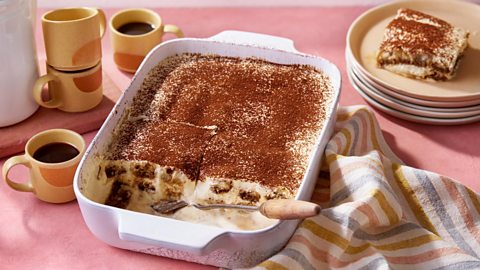
Pizza
Want to master the crispy homemade base that authentic Italian pizzas are famous for? It's not easy unless you have wood-fired pizza oven at home, but Mario Mastrangelo of Happy Face Pizza has a great hack.
“Start the dough off in a pan first before putting it in the oven. This helps the pizza keep its shape, makes sure the bottom cooks smoothly and helps the crust rise.”
Now make
Homemade pasta
From ravioli to spaghetti, fresh, hand-rolled pasta is a real Italian treat. Preparing it at home all starts with mixing the perfect dough,says Giuseppe Cipolla of Vapiano UK.
“To make the best homemade pasta, the rule of thumb is one egg to every 100 grams of flour.”
When it comes to filled pasta, Mitshel Ibrahim, head chef at Ombra says, “Don't cover the pasta when you leave it in the fridge, otherwise the filling will make the pasta wet. Then cook it for one to two minutes in boiling, salty water.”
Now make
How to make fresh pasta
France
Fruit tart
Whether it's filled with apricot, apple or blueberries, a fruit tart is quintessentially French. Like other decadent French desserts, though, it can be tricky to master.
Franck Raymond from Augustine Kitchen in Battersea has a tip to make things easier. “Tarts always taste better when you cook the fruits with the pastry at the same time - don't bake the tart case first.”
Michel Roux Jr. follows exactly that method in his French apple tart recipe. Want something savoury? This tarte flambée is said to be France's answer to pizza.
Now make
Apple tarte tatin
Marcus Wareing's a big fan of tarte tatin and has created his own recipe
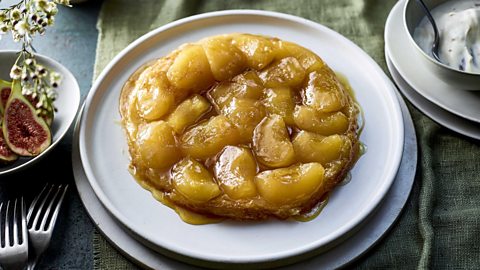
Onion soup
Regardless of the season, French onion soup, with its rich stock, caramelised onions and cheesy croutons, is hard to beat. Christophe Schmitt, chef at Terre Blanche suggests you keep it classic but “for a Provençal touch, add a little chopped basil to the soup before putting it under the grill.”
You could also make the croutons for your French onion soup garlicky for an extra flavour hit.
Now make
Boeuf bourguignon
This French wine-infused stew is popular on our side of the Channel too, but doesn't always stay true to its continental roots. Christophe Marleix, executive chef at CORD says to use hefty chunks of beef, around 80 or 90g each, instead of smaller pieces so the meat stays juicier. Plus, if budget and time allow, use different cuts to up the flavour and marinate the meat for 24 hours or more.
Once the beef is browned and all the other ingredients have been added, Marleix recommends moving your stew from the hob into the oven.
“For me, the best method is to cook in the oven, then there is no risk that it burns at the bottom. The ideal temperature is about 150-160C, and it should cook for three to five hours, depending on the quantity.”
To keep costs down use braising steak when making boeuf bourguignon, not only is it a budget cut it will give you a tender texture.
Now make
Spain
Paella
This famous dish has lots of iterations across the different regions of Spain. It always has that same Spanish character though, which Omar Allibhoy, founder of Tapas Revolution, has some tips for perfecting at home.
“Paella is all about building layers of flavour. Frying larger ingredients first and then adding smaller ingredients later will help to achieve a great brown colour throughout, while avoiding any parts being burnt or too pale. Then, when you add the water to the pan, all that caramelisation and the burnt bits on the bottom will dissolve, creating a rich stock for the rice to absorb later. Without that, you will have a tasteless paella.”
Now make
Chicken and seafood paella
Inspired by Mallorcan family members, Laura Wingrove's paella is highly-rated
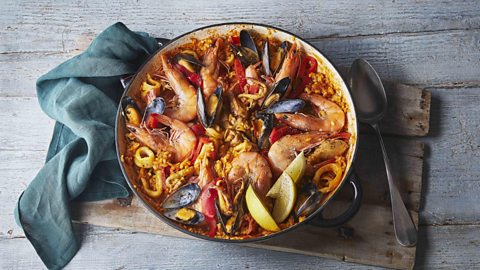
Sangria
Sangria is the go-to summer drink in the Med. Chef Andrea Ravasio says that different fruits like peach and banana are often added in Spain. In summer months, seasonal fruits like melon and red apples, work well, too. He also recommends mixing in triple sec or Cointreau alongside the red wine.
Ángel León, chef at Gran Meliá Sancti Petri, agrees on experimenting with different types of alcohol: “Try adding some cream sherry, amontillado or fino.”
Now make
Gazpacho
This cold soup is the taste of Spanish summers and Dani Garcia, head chef at BIBO Shoreditch, is a fan of keeping it simple. “The most important trick of the recipe is to not add water, since the tomatoes already provide enough. No bread, no water. And yes, no cucumber!”
Nacho del Campo, executive chef at Camino, says choosing the right tomatoes is key. “Use well-matured tomatoes that have never been refrigerated. To get a good balance of sweetness, mix matured tomatoes with cherry tomatoes.”
There are plenty of other varieties of chilled soup you can try in addition to gazpacho.
Now make
Spanish tortilla
When cooked right, potato omelettes are hard to beat. “For the best tortilla, cook it slowly,” says Ravasio. “I recommend cutting your onions julienne and your potato evenly in cubes of no more than 2cm.
“Pan-fry your onions and potatoes in olive oil at no more than 80 or 90C until they are soft. Then take your potato and onion mixture, add egg and cook your tortilla ‘medium-rare’ with a soft centre.”
Spanish tortilla is not a quick dish. Take your time to cook it gently, bringing out the sweetness and setting the eggs softly. And serve with a garlicky aioli.
Now make
Originally published August 2022. Updated August 2024
